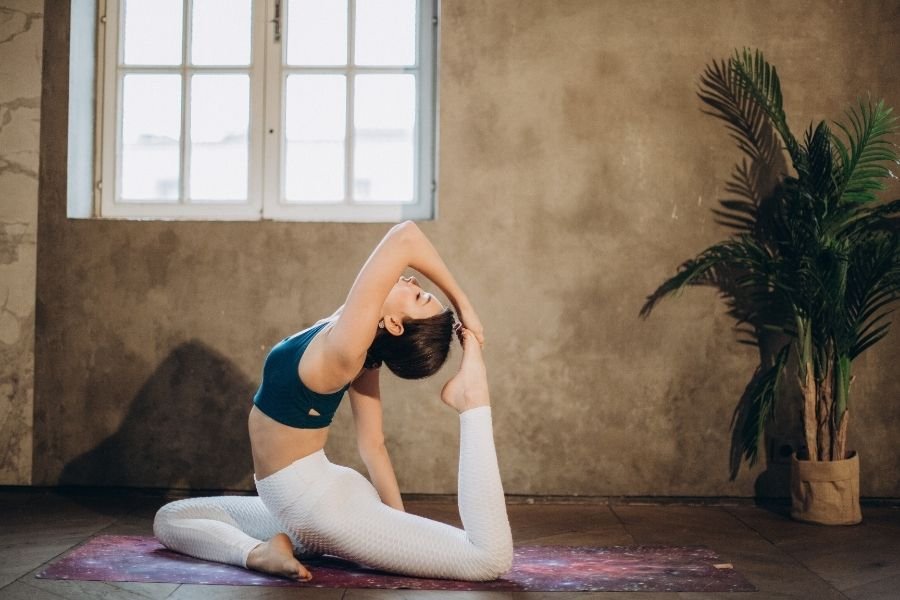
Modern yoga is everywhere, in gyms, on Instagram, and yes, wrapped in stretchy pants and scented candles. But yoga wasn’t always about perfect poses or beachy waves. Long before it became a lifestyle brand, it was a path to freedom, of the mind, body, and spirit. So let’s roll up the mat for a second and dive into what yoga really is… beyond the leggings and the beautiful long hair.
Yoga, at its core, is a practice of union; of mind, body, breath, and spirit — and it begins with something beautifully simple: observation. That ability to pause, to become aware, is the first step to a deeper life. And while most of us are introduced to yoga through physical postures (asanas), that’s actually just one small part of an ancient system, a system designed not just to stretch our bodies, but to stretch our consciousness.
To get to that expansive state, some call it Nirvana, others Samadhi or Shunya — where the mind is calm, grounded, and deeply aware, yoga offers a clear path.
But what is that path? And where did it even begin?
The Roots of Yoga
Yoga has been around for thousands of years. The first mention of it comes from the ancient Vedas, but it was Sage Patanjali, sometime around 400 CE, who codified this practice into what we now know as the Yoga Sutras, a foundational text that describes the eight-fold path to liberation.
Before Patanjali, it is said that Shiva, the first yogi, Adiyogi, was the originator of yoga. In deep stillness, he observed and embodied the ultimate potential of the human being. He passed on his knowledge of Hatha Yog to seven sages, known as the Saptarishis. These sages went on to spread the teachings across the Indian subcontinent through Diksha, the sacred teacher-to-student transmission.
So what we practice today, whether it’s an hour on the mat, or a moment of breathwork in the middle of a busy day, is part of a living lineage.
The Eight Limbs of Yoga
If you’re looking for the full experience of yoga, here’s the roadmap Patanjali laid out:
Yamas: Ethical Foundations
Think of the Yamas as boundaries that keep your energy clean and your relationships kind:
Niyamas: Personal Practice
These are the everyday practices that help you live with clarity and purpose:
In the Yoga Sutras, Patanjali says:
“Satu dirgha kala nairantarya satkara asevitah drdha bhumih”
It means that Yoga becomes firmly rooted when it is practiced with consistency, dedication, and devotion over a long period of time.
Practice is what transforms knowledge into wisdom. The more we walk this path, slowly, mindfully, the closer we come to that mysterious but very real place called Shunya. A space of zero… that holds everything.
Looking for personalized guidance on learning how to start with yoga and integrate it in your life. We’re here to help! Reach out to us via Contact Us or WhatsApp for expert coaching and support, and let’s create a personalised yoga session for you!
Whether you’re starting out or deepening your practice, we’ll meet you where you are. Namaste
FAQs
1. Do I need to be flexible to start yoga?
Not at all. Flexibility is a result, not a requirement. Yoga meets you where you are—whether you can touch your toes or not.
2. Which style of yoga is right for me?
With many styles, you can choose for a beginner class with Hatha or Vinyasa. Yin yoga is a restorative and gentle form of yoga. Try a few and find what resonates.
3. How often should I practice yoga (Asanas)?
For a beginner, it is advisable to practice 2–3 sessions per week. Yoga can be practiced daily with gentle poses in daily life like Malasana (full deep squat) everyday to improve mobility.
4. What equipment do I need?
A yoga mat, a water bottle and comfortable clothes for your first yoga class, are a must. Extras like blocks or straps are optional and most classes will provide it. Check with the studio.
5. How will yoga benefit me physically and emotionally?
Yoga improves flexibility, posture, and digestion while calming the mind, reducing anxiety, and supporting emotional resilience.